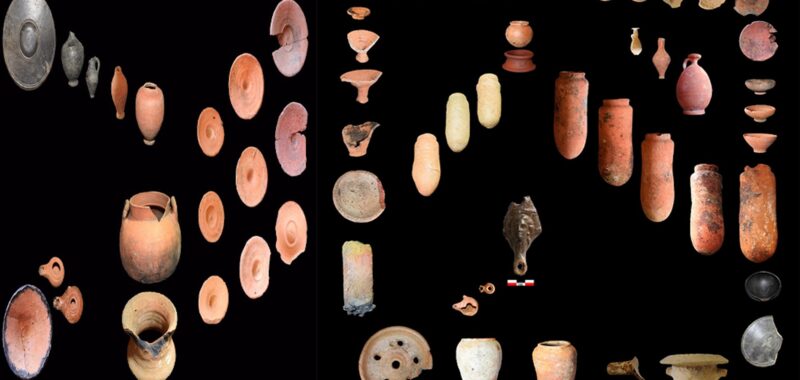Egyptologists have excavated a nearly 9,150-square-foot astronomical observatory in modern-day Tell el-Faraeen dating back to the sixth century BCE—the first and largest of its kind from that era. In an August 23 announcement from Egypt’s Ministry of Tourism and Antiquities (interpreted from Arabic to English using Google Translate), the mud brick structure contained numerous tools that, although comparatively simple in design, allowed for the precise study and measurement of solar calendrical dates related to Egyptian religious rites, royal coronations, and agricultural plans.
The facility is located within a sprawling archeological site now known as the Temple of Buto (the Greek name of the Egyptian god, Wadjet), and is located about 50 miles east of Alexandria. Built in the southeastern portion of the temple, the astronomical complex featured an east-facing entrance for sunrises, an L-shaped open central hall supported by columns, and a high, inward sloping mud brick wall “resembling the style of the Egyptian edifice known in temple entrances,” according to the government’s statement.

One of the most notable installations within the observatory is a sloping shadow clock, a sundial variant commonly used in ancient societies. The nearly 16-foot-long limestone slab is topped with five flat blocks, two horizontal and three vertical, which experts believe originally included angled engraved lines. Altogether, the sloping shadow clock was used to measure sun and shadow inclinations over the course of a day.
Another piece of equipment entailed three carefully arranged stone blocks embedded in a circular hallway—a central slab with circular stones positioned to its north and west. This, according to researchers, was used by Egyptian astronomers and priests to take measurements of the sun’s inclination. Other rooms are believed to have stored additional tools, while another space appears to have been a small observatory tower. Throughout the facility, artwork displayed various deities, as well as astronomical scenes representing sunsets and sunrises across the society’s three seasons of the year.

Apart from the stone equipment, the Temple of Buto’s observatory also contained multiple statues of Egyptian gods, including both gray granite and bronze idols of Osiris, a bronze depiction of Nemes, a terracotta bust of Bes, and many others.
[Related: Egypt’s oldest pyramid may have been built using a hydraulic lift.]
It’s not just the facility itself that is interesting for researchers, but also the time in which the Temple of Buto observatory was built. As Space.com noted on August 29, the building was constructed and operated during an extremely volatile time in ancient Egyptian history, when multiple foreign powers seized control of the nation during its transition to the late historical phase of pharaonic power.

